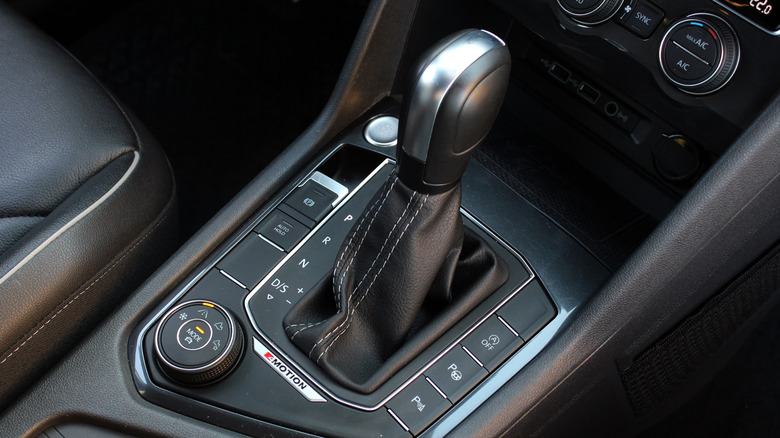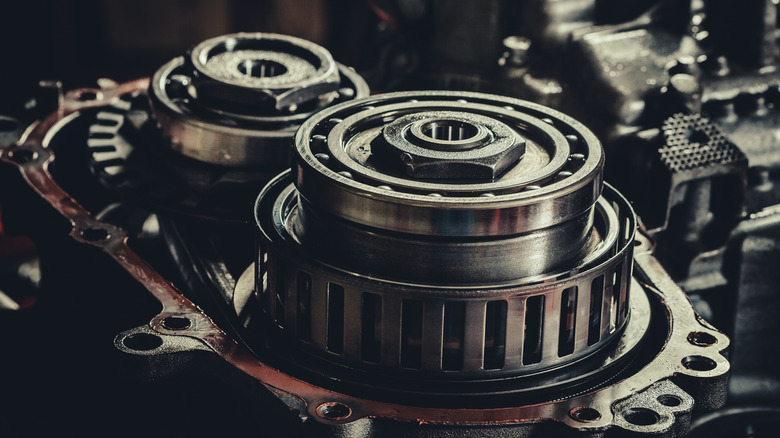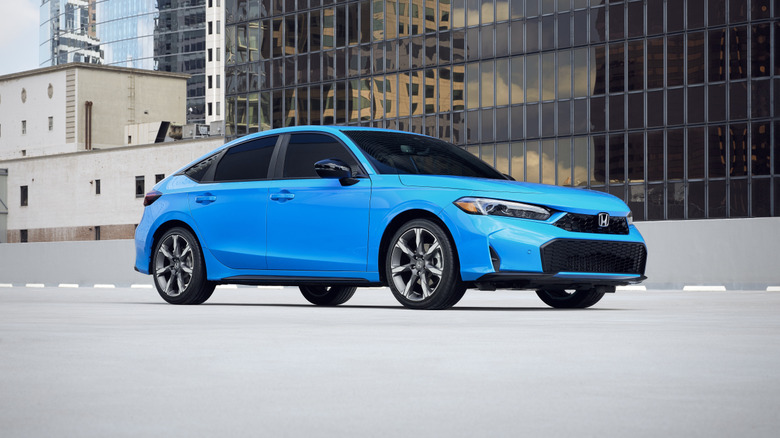CVT Vs Automatic Transmissions: The Key Differences Between Them (And Why They Matter)
When choosing a new car, first-time buyers tend to overlook the type of transmission it uses. Sure, 97% of drivers in the U.S. now drive automatic vehicles, leading many to assume that that's the only option there is, apart from the increasingly few models with manuals.
There are different types of automatic transmissions, with the two most common today being the traditional automatic, and the continuously variable transmission, or CVT. Although both fall under the automatic category, they have differences that need to be understood by potential buyers, so they know what to expect the moment they drive off the dealership lot.
The main difference between a standard automatic and a CVT lies in the way they deliver power to the wheels. Traditional automatic transmissions work through a set of planetary gears that shift up or down depending on vehicle speed and load. On the other hand, a CVT doesn't rely on gears to move the car. Instead, it utilizes a system of pulleys and a steel or composite belt to deliver an infinite number of gear ratios.
The cone-shaped variable-diameter pulleys allow the belt to ride at different diameters, continuously changing the ratio between engine speed and output speed in the process. By not relying on fixed gears, a CVT can deliver smoother acceleration and better fuel efficiency. However, there are still other elements that come into play when comparing the overall driving experience that the two transmission types have to offer.
Other differences between a traditional automatic and a CVT
Another difference between a traditional automatic and a CVT is the torque converter. The fluid coupling torque converter found in automatic vehicles serves as a hydraulic connection between the transmission and the engine, resulting in smooth power transfer. This also allows the car to idle without stalling or operate without shutting off unexpectedly when not accelerating.
In other words, it's like the clutch used when shifting a manual transmission, obviously without the pedal. Meanwhile, a CVT does not necessarily need the same torque converter unit, since its system of pulleys and belts is already responsible for handling torque. However, manufacturers equip their CVT vehicles with dry and wet clutches for low-torque and high-torque applications, respectively.
Due to CVT's unique overall design, vehicles running on this transmission may feel less responsive than their automatic transmission counterparts. Accelerating from a standstill or holding an engine at a steady rotational speed often leads to what many drivers refer to as the rubber band effect, or the feeling of delayed power delivery. Without fixed gears, the transmission takes time to adjust the ratio to reach or maintain that optimal engine speed.
Inside the car, the driver will hear the engine revving louder first before the vehicle can even pick up the pace. This perceived unresponsiveness is why CVT transmissions get a bad rap, as it often translates to boring driving for more experienced drivers and car owners.
More and more cars offer CVTs
The auto industry has pretty much fully transitioned from manual to automatic, with the number of new manual cars sold in the U.S. expected to fall below 1% in 2025. As automatic transmissions became more fuel-efficient and overall far better than manuals, demand for stick shifters inevitably dwindled. Now that we are seeing the last of manual-driving vehicles, it appears the industry is, yet again, undergoing another shift, pun intended.
CVTs started gaining traction in the 1980s, even though they have been around since the 1950s. Since the turn of the century, however, CVT has gotten more popular due to the advantages it offers over the traditional automatic. One of those has to do with the CVT being less expensive to manufacture, as it uses fewer components.
Additionally, a CVT's design allows it to keep the engine at relatively low RPMs while cruising, or at steady speeds for better fuel efficiency. For these reasons, more manufacturers are equipping their cars with CVTs.
For 2025, a large number of new vehicles are available with CVTs in the U.S., ranging from sedans and SUVs, to minivans, and even trucks. The extensive list includes both affordable and upscale brands, with some of the highly anticipated models being the new Honda Civic, the Kia K4, the Chevrolet Malibu, and the Infiniti QX50 and QX55.


